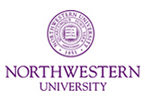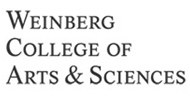Team:Northwestern/Project/Introduction
From 2011.igem.org
Helenmelon (Talk | contribs) |
Helenmelon (Talk | contribs) |
||
| (23 intermediate revisions not shown) | |||
| Line 9: | Line 9: | ||
</div> | </div> | ||
</html> | </html> | ||
| + | |||
<br><br> | <br><br> | ||
| - | <DIV style="font-size:20px"> | + | <DIV style="font-size:20px">Basic Idea</DIV> |
| - | + | ||
| - | + | ||
| - | + | Cell signaling and quorum sensing in ''P. aeruginosa'' is mediated by the autoinducers PAI-1 and PAI-2, so these molecules are excellent indicators that this bacterium is present. <html><sup><A HREF="#1">[1]</A></sup></html>. The production of PAI-1 and PAI-2 are specific to the las and the rhl systems respectively<html><sup><A HREF="#2">[2]</A></sup></html>. Transcriptional activation of target genes can be amplified up to 1000-fold due to the binding of the R-protein autoinducer/dimer complex to its respective target promoter<html><sup><A HREF="#3">[3]</A></sup></html>. Therefore, our detection system uses the specificity of these two autoinducer-response systems as a definitive means of detecting ''P. aeruginosa''. | |
| - | Cell signaling and | + | |
| - | + | ||
| - | + | <div align="center"><html><table class="image"> | |
<caption align="bottom"></html>'''Figure 1:''' Activation of the induced promoters of ''P. aeruginosa'' Las and Rhl sequences by autoinducer/R-protein complexes (transcriptional regulation)<html></caption> | <caption align="bottom"></html>'''Figure 1:''' Activation of the induced promoters of ''P. aeruginosa'' Las and Rhl sequences by autoinducer/R-protein complexes (transcriptional regulation)<html></caption> | ||
<tr><td><img src="https://static.igem.org/mediawiki/2011/1/13/Induced_outline.jpg" style="opacity:1;filter:alpha(opacity=100);" width="600px" height="230px" alt="fig1"/ border="0"></td></tr> | <tr><td><img src="https://static.igem.org/mediawiki/2011/1/13/Induced_outline.jpg" style="opacity:1;filter:alpha(opacity=100);" width="600px" height="230px" alt="fig1"/ border="0"></td></tr> | ||
</table></html></div> | </table></html></div> | ||
| - | + | ||
| - | <DIV style="font-size:20px"> | + | |
| - | + | <DIV style="font-size:20px">Detection System</DIV> | |
| - | + | ||
| - | + | ||
| - | + | Our detection system incorporates LasR and RhlR receptors (R-proteins) for the autoinducers PAI-1 and PAI-2. As previously reported, LasR/PAI-1 and RhlR/PAI-2 protein complexes act primarily as transcriptional factors<html><sup><A HREF="#4">[4]</A></sup></html>. Therefore, our platform will utilize inducible promoters from the genome of ''P. aeruginosa'' as indicated in Figure 2. These promoters are induced by their respective ligand-bound dimeric R-protein complexes, LasP for LasR/PAI-1 and RhlP for RhlR/PAI-2. In our proof-of-concept system, the inducible promoters drive the expression of reporter proteins, such as GFP or RFP, to report the presence of ''P. aeruginosa'' autoinducer molecules through a readout that is easily quantified. Future implications of this concept could include reporter genes that are detectable by other means, such as a simple visual color-change system. | |
| - | + | ||
| - | + | ||
| - | <caption align="bottom"></html>'''Figure 2:''' Coupling the induced promoters of ''P. aeruginosa'' with reporting constructs ( | + | <div align="center"><html><table class="image"> |
| + | <caption align="bottom"></html>'''Figure 2:''' Coupling the induced promoters of ''P. aeruginosa'' with reporting constructs (inserts 1 and 2)<html></caption> | ||
<tr><td><img src="https://static.igem.org/mediawiki/2011/1/10/Induced_new.jpg" style="opacity:1;filter:alpha(opacity=100);" width="600px" height="140px" alt="fig1"/ border="0"></td></tr> | <tr><td><img src="https://static.igem.org/mediawiki/2011/1/10/Induced_new.jpg" style="opacity:1;filter:alpha(opacity=100);" width="600px" height="140px" alt="fig1"/ border="0"></td></tr> | ||
</table></html></div> | </table></html></div> | ||
| - | + | ||
| - | <DIV style="font-size:20px"> | + | |
| - | + | <DIV style="font-size:20px">Design Considerations</DIV> | |
| - | In our | + | |
| + | |||
| + | In our system, the lasR and rhlR genes are expressed from a high efficiency constitutive promoter and ribosome binding site (RBS). Given this high steady-state expression of LasR and RhlR proteins, we predict that the autoinducers PAI-1 and PAI-2 will be rate-limiting for the induction of the reporter genes. Therefore, reporter gene expression should commence rapidly upon the binding of PAI-1 or PAI-2 to their respective R-protein. | ||
| + | |||
| + | |||
| + | ------------------ | ||
| + | <DIV style="font-size:10px"> | ||
| + | <html><A NAME="1" href="http://www.ncbi.nlm.nih.gov/pubmed/7494482">[1]</A> Latifi A, Winson MK, Foglino M, Bycroft Bw, Stewart GS, Lazdunski A, et al. Multiple homologues of LuxR and LuxI control expression of virulence determinants and secondary metabolites through quorum sensing in Pseudomonas aeruginosa PAO1. Mol Microbiol 1995;17:333-43.</html><br> | ||
| + | |||
| + | <html><A NAME="2" href="http://www.ncbi.nlm.nih.gov/pubmed/10984043">[2]</A> Stover CK, Pham XQ, Erwin AL, Mizoguchi SD, Warrener P, et al. Complete genome sequence ofPseudomonas aeruginosa PA01, an opportunistic pathogen. Nature. 2000;406:959–964.</html><br> | ||
| + | |||
| + | <html><A NAME="3" href="http://jb.asm.org/cgi/content/abstract/185/7/2080">[3]</A> Wagner VE, Bushnell D, Passador L, Brooks AI, Iglewski BH. Microarray analysis ofPseudomonas aeruginosa quorum-sensing regulons: Effects of growth phase and environment. J Bacteriol. 2003;185:2080–2095.</html><br> | ||
| + | |||
| + | <html><A NAME="4" href="http://www.ncbi.nlm.nih.gov/pmc/articles/PMC179088/">[4]</A> Pesci EC, Pearson JP, Seed PC, Iglewski BH. Regulation of las and rhl quorum sensing inPseudomonas aeruginosa. J Bacteriol 1997;179:3127-32.</html><br> | ||
| + | |||
| + | |||
| + | </div> | ||
| + | {{:Team:Northwestern/Templates/footer}} | ||
Latest revision as of 02:10, 29 October 2011
PROJECT

RESULTS

CONSIDERATIONS

ABOUT US

NOTEBOOK

ATTRIBUTIONS


Cell signaling and quorum sensing in P. aeruginosa is mediated by the autoinducers PAI-1 and PAI-2, so these molecules are excellent indicators that this bacterium is present. [1]. The production of PAI-1 and PAI-2 are specific to the las and the rhl systems respectively[2]. Transcriptional activation of target genes can be amplified up to 1000-fold due to the binding of the R-protein autoinducer/dimer complex to its respective target promoter[3]. Therefore, our detection system uses the specificity of these two autoinducer-response systems as a definitive means of detecting P. aeruginosa.
 |
Our detection system incorporates LasR and RhlR receptors (R-proteins) for the autoinducers PAI-1 and PAI-2. As previously reported, LasR/PAI-1 and RhlR/PAI-2 protein complexes act primarily as transcriptional factors[4]. Therefore, our platform will utilize inducible promoters from the genome of P. aeruginosa as indicated in Figure 2. These promoters are induced by their respective ligand-bound dimeric R-protein complexes, LasP for LasR/PAI-1 and RhlP for RhlR/PAI-2. In our proof-of-concept system, the inducible promoters drive the expression of reporter proteins, such as GFP or RFP, to report the presence of P. aeruginosa autoinducer molecules through a readout that is easily quantified. Future implications of this concept could include reporter genes that are detectable by other means, such as a simple visual color-change system.
 |
In our system, the lasR and rhlR genes are expressed from a high efficiency constitutive promoter and ribosome binding site (RBS). Given this high steady-state expression of LasR and RhlR proteins, we predict that the autoinducers PAI-1 and PAI-2 will be rate-limiting for the induction of the reporter genes. Therefore, reporter gene expression should commence rapidly upon the binding of PAI-1 or PAI-2 to their respective R-protein.
[1] Latifi A, Winson MK, Foglino M, Bycroft Bw, Stewart GS, Lazdunski A, et al. Multiple homologues of LuxR and LuxI control expression of virulence determinants and secondary metabolites through quorum sensing in Pseudomonas aeruginosa PAO1. Mol Microbiol 1995;17:333-43.
[2] Stover CK, Pham XQ, Erwin AL, Mizoguchi SD, Warrener P, et al. Complete genome sequence ofPseudomonas aeruginosa PA01, an opportunistic pathogen. Nature. 2000;406:959–964.
[3] Wagner VE, Bushnell D, Passador L, Brooks AI, Iglewski BH. Microarray analysis ofPseudomonas aeruginosa quorum-sensing regulons: Effects of growth phase and environment. J Bacteriol. 2003;185:2080–2095.
[4] Pesci EC, Pearson JP, Seed PC, Iglewski BH. Regulation of las and rhl quorum sensing inPseudomonas aeruginosa. J Bacteriol 1997;179:3127-32.
 "
"




